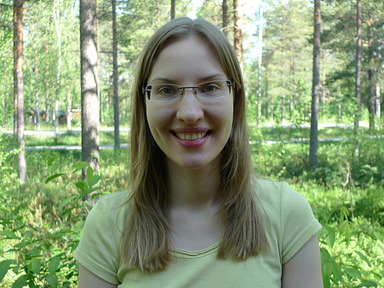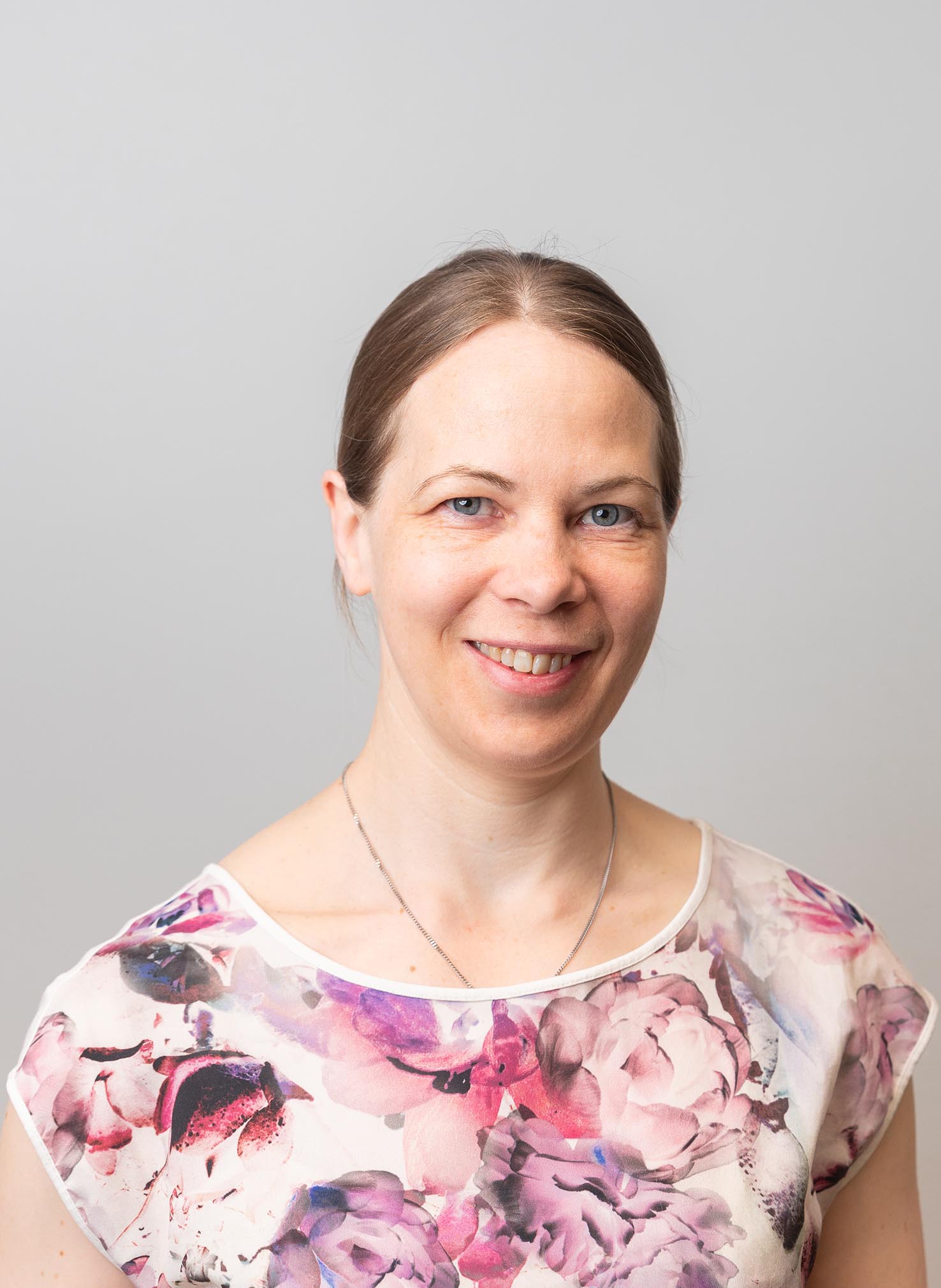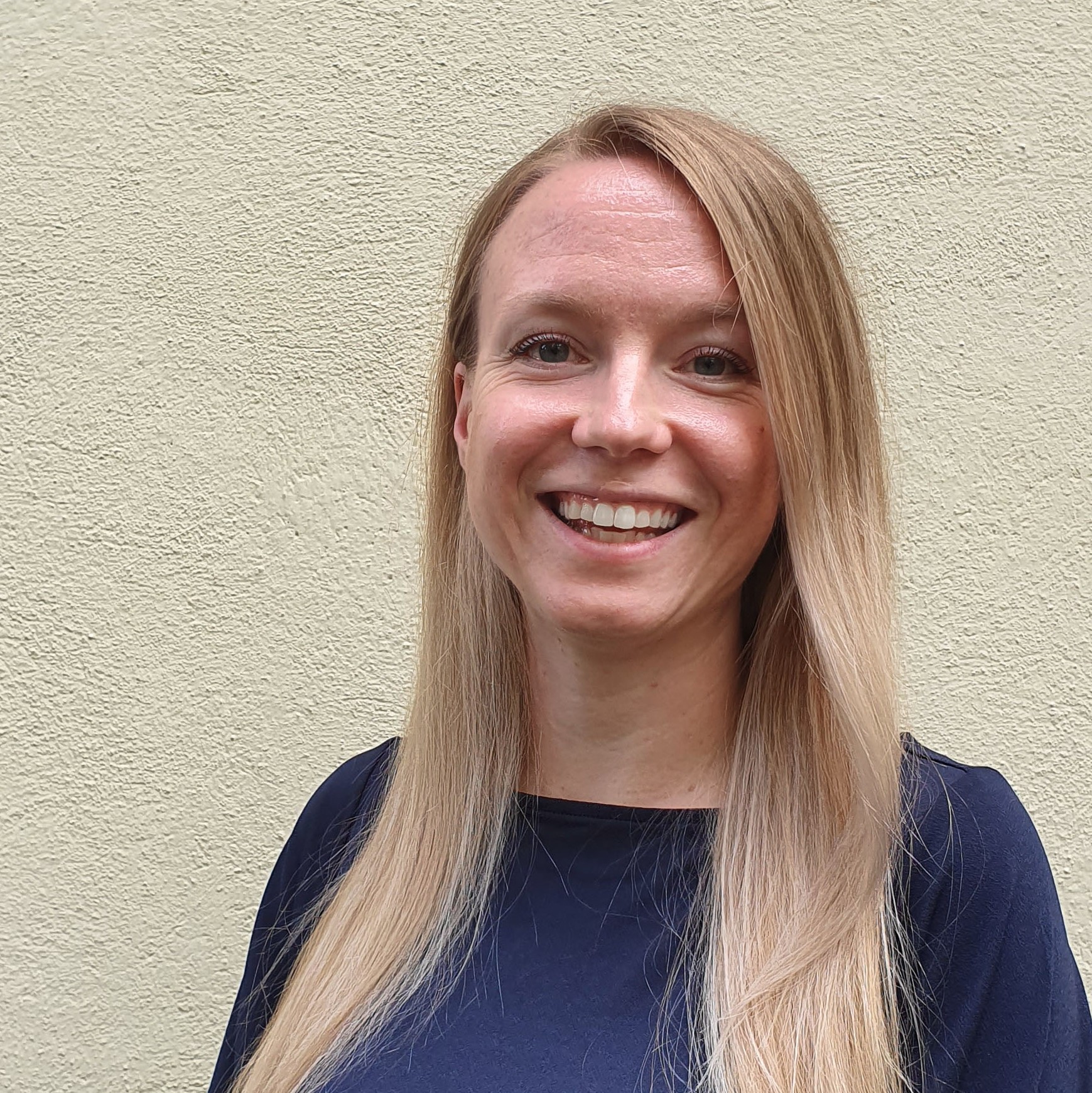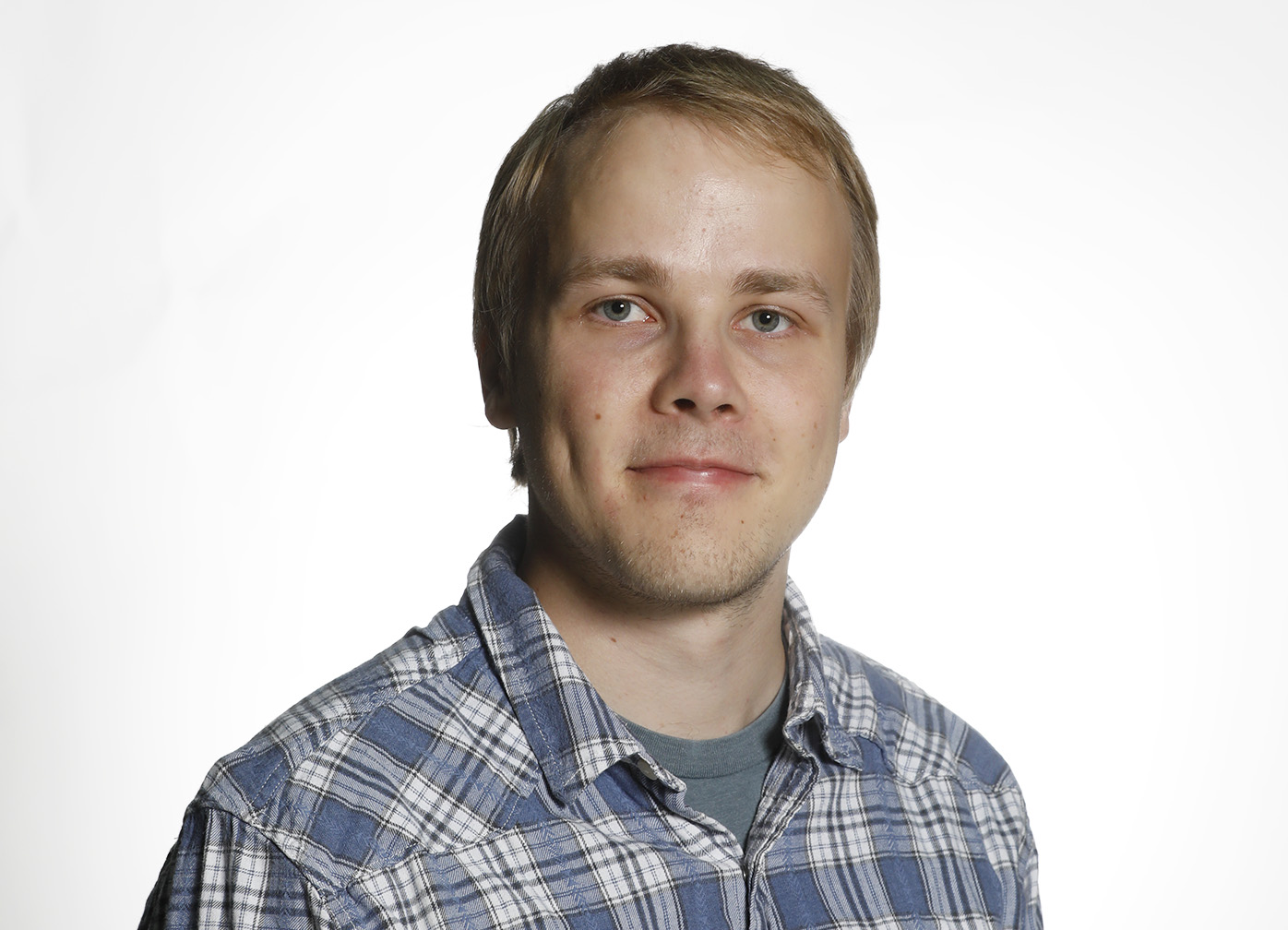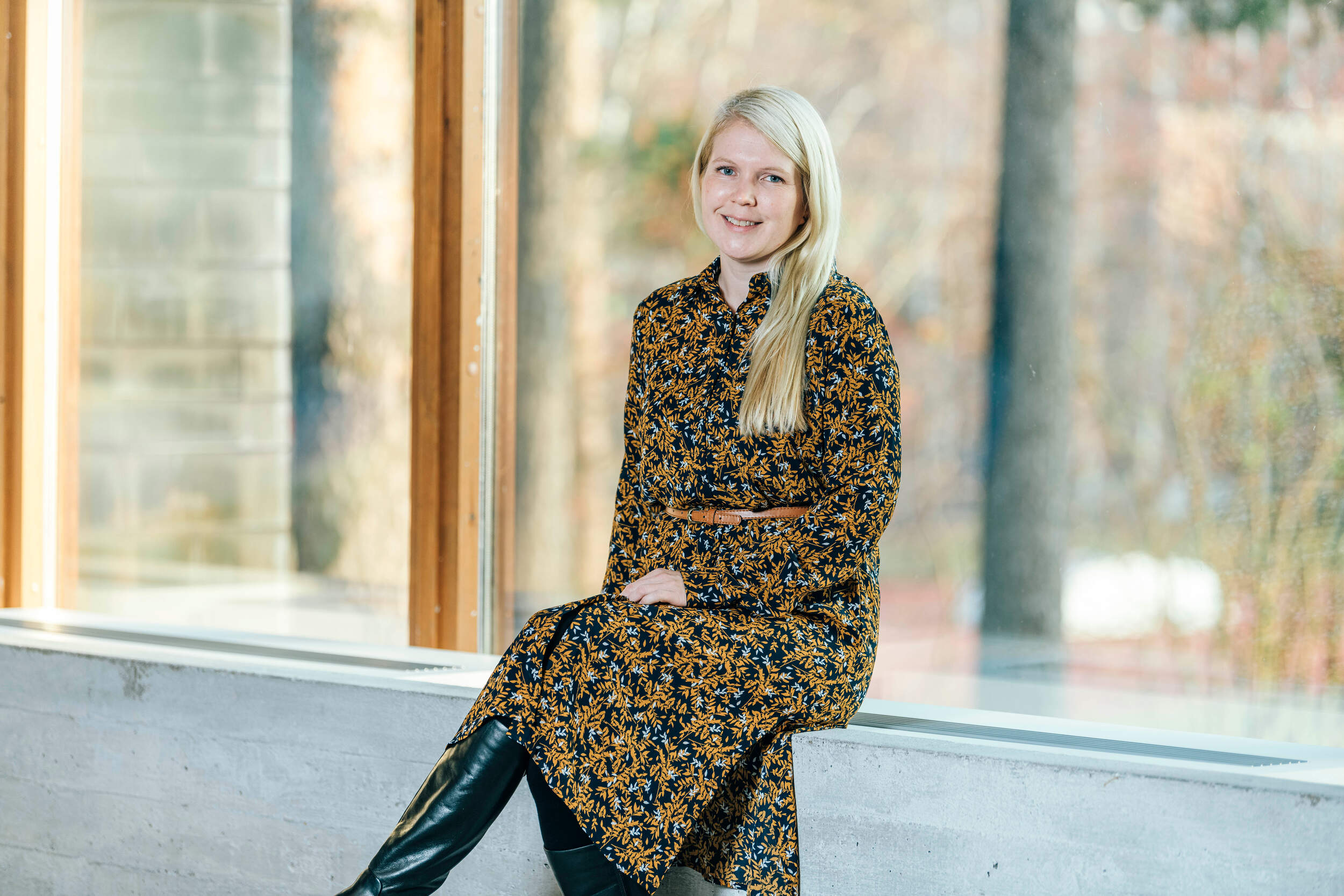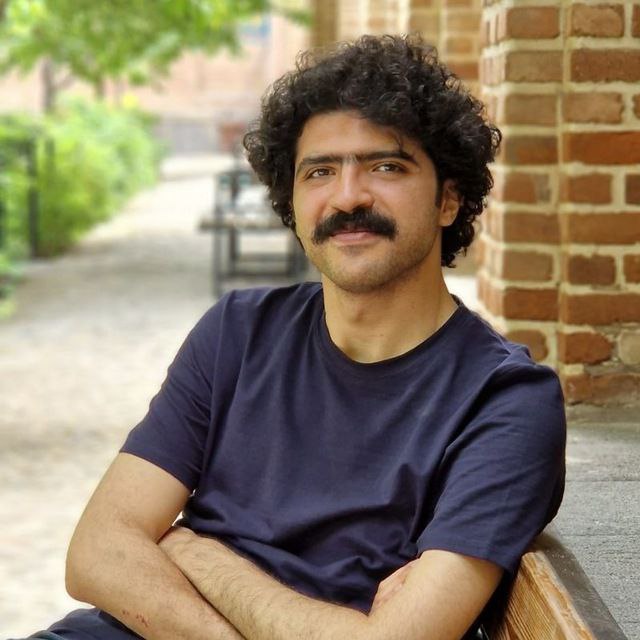Water and Environmental Engineering

Our research is divided into two strategic areas: global water issues and sustainable circular economy, which are further divided into four research entities.
Read more about the studies: Master's Programme in Water and Environmental Engineering.
Limited water resources and increasing vulnerability are among the key challenges facing humanity.
These pressures stem especially from the utilisation of natural resources and the degradation and contamination of the environment. In most areas, water problems are closely connected to political and societal systems. For one, unstable conditions and the short-term planning of societies cannot support the sustainability of water resources. Meanwhile, conflicts of interest related to water sow discord even between nations.
The aims and scope of the research group are to:
- study global water challenges with a problem-solving approach, taking into account the multifaceted relationships between water and development
- offer high-quality teaching related to the research topics
- provide expert services related water issues and sustainable technologies
In this area, the main topics of our work are:
- Water for food
- Climate change and water
- Integrated approaches to water management: IWRM, water-energy-food nexus
- Transboundary rivers; role of power and politics in water management
- Water innovations & water business
Head of the group: Professor Olli Varis.
Read more from the WDRG home page.
As water is both a vital resource as well as a resource that is exposed to environmental effects, human society is inextricably connected to and reliant on nature and its waters.
The aims and scope of the research group are to:
- promote sustainable use of water and advance the assessment and prediction of the state of the water environment
- measure and quantify changes in water and the water environment caused by anthropogenic activities in both empirical and laboratory settings
- develop computational hydrology and hydraulics applications, ecohydraulics, nature-based solutions and basin-scale process examination – the watershed basin is our key unit, enabling the study of the effects of land cover and sub-processes related to precipitation, evapotranspiration, water storage and runoff development
In this area, the main topics of our work are:
- ecohydraulics and nature-based solutions
- water in cities
- water in agricultural areas
- water in forests
Head of the group: Professor Harri Koivusalo. Learn more about our research group
Water and wastewater engineering research covers drinking water production, wastewater treatment and the piped networks needed for water supply and sewer collection. Providing water services is critical for society: they need to be functional on every day and under every circumstance.
The aims and scope of the group are to:
- improve the performance of drinking water and wastewater treatment processes in terms of resource recovery, automation and control, as well as the removal efficiency of conventional and emerging pollutants
- support the optimal management of drinking water distribution and sewer collection systems using existing operational and geospatial information – our research is supported by an analytical water laboratory and a variety of on-site measurement and treatment devices
- support water utilities by improving cost efficiency, reducing environmental loads and producing safer drinking water – these solutions often have business potential for the companies involved
In this area, the main topics of our work are
- preventive health care: clean water production and sanitation
- environmental protection: wastewater treatment processes
- energy and resource efficiency: water supply and sewer systems; nutrient and metal recovery from wastewater; sludge utilisation
Head of the group: Assistant professor Anna Mikola. Learn more about our research group.
Environmental Hydraulics Lab
Aalto Environmental Hydraulics Lab (EHL) is a multipurpose laboratory for experimental research and teaching activities. We seek to improve understanding about dynamics and processes of water, sediment, vegetation, nutrients, and harmful substances in the hydro-environment.

Latest publications
Pedagogical infrastructures in multidisciplinary technology education
A modified zeolite (Na2SO4 @zeolite NaA) as a novel adsorbent for radium-226,228 from acidic radioactive wastewater : Synthesis, characterization and testing
SWMMLIDopt : a tool for optimization of low-impact development (LID) measures using the SWMM model
Analytical methods for online data quality assessment
Drought in Water Abundant Finland - Data and Tools for Drought Management
Water governance for water security: analysing institutional strengths and challenges in Finland
A novel and sustainable composite of L@PSAC for superior removal of pharmaceuticals from different water matrices : Production, characterization, and application
A novel two stages chemical activation of pinewood waste for removing organic micropollutants from water and wastewater
A sustainable and highly efficient fossil-free carbon from olive stones for emerging contaminants removal from different water matrices
A Sustainable Banana Peel Activated Carbon for Removing Pharmaceutical Pollutants from Different Waters : Production, Characterization, and Application
Opinnäytteet | Thesis
Julkaisut löytyvät myös Aalto-yliopiston oppimiskeskuksen kokoelmista.
Theses can also be found from Aalto Doc online collection.
Lehtoranta, V. 2023. Non-market benefits of improved freshwater bodies: insights for regional water policy. Link
Tomin, O. 2023. Tailoring the difference - Tailored biochars for sustainable water treatment: Customizing adsorbents for specific applications. Link
Kaljunen, J. 2023. Waste nutrients harvested: Design and evaluation of nitrogen and phosphorus recovery processes utilizing membrane contactor and adsorption techniques. Link
Niva, V. 2022. The interplay of environmental and social drivers of migration - A global synthesis. Link
Box, W. 2022. The impact of natural floodplain vegetation on flow resistance and fine sediment transport. Link
Kinnunen, M. 2022. Resilience perspectives in global food systems - Exploring variability, localness and diversity. Link
Kallio, M. 2022. Towards more useful water information - methods for fine-scale spatial estimation. Link
Fallon, A. 2022. Keep it Complex - Critical perspectives on water governance for dynamic social–hydrological systems. Link
Heino, M. 2022. Susceptibility of global crop production to climate variability and change. Link
Rantanen, P. 2020. Nitrification in drinking water distribution and wastewater treatment - Reasons, consequences and the effects of the organic matter. Link
Lehikoinen, E. 2020.Building a more resilient Finnish food system - From import dependence towards domestic natural resource use. Link
Laakso, T. 2020. Data-driven network asset management - Focus on sewer systems. Link
Munia, H. 2020. Global analyses of drivers of water scarcity indicators in transboundary river basins. Link
Roiha, P. 2019. Advancements of operational oceanography in the Baltic Sea. Link
Salo, H. 2019. Assessing the effects of subsurface drainage on hydrology and nitrogen transport in Nordic fields. Link
Jalava, M. 2019. The water we eat - Methods for estimating water use of diets in changing food systems. Link
Välitalo, P. 2019. Toxicity and emerging contaminants – Effect-based assessment of complex environmental samples. Link
Haapala, J. 2018. Governing water for local development - Solutions to implementation challenges in remote, rural Nepal. Link
Kruglova, A. 2018. Biological removal of emerging micropollutants in nitrifying activated sludge at low temperatures. Link
Talvitie, J. 2018. Wastewater treatment plants as pathways of microlitter to the aquatic environment. Link
Yazdani, R M. 2018. Engineered adsorptive materials for water remediation - Development, characterization, and application. Link
Haahti, K. 2018. Modelling hydrology and sediment transport in a drained peatland forest - Focus on sediment load generation and control after ditch network maintenance. Link
Sahimaa, O. 2017. Recycling potential of municipal solid waste in Finland. Link
Niemi, T. 2017. Improved Precipitation Information for Hydrological Problem Solving - Focus on Open Data and Simulation. Link
Turunen, M. 2017. Assessing water and sediment balances in clayey agricultural fields in high-latitude conditions. Link
Kattelus, M. 2017. Framing wicked water problems: Cases from large Asian transboundary river basins. Link
Haimi, H. 2016. Data-derived soft sensors in biological wastewater treatment - With application of multivariate statistical methods. Link
Krebs, G. 2016. Spatial Resolution and Parameterization of an Urban Hydrological Model : Requirements for the Evaluation of Low Impact Development Strategies at the City Scale. Link
Porkka, M. 2016. Securing global food supplies with limited resources - Lessons from the past. Link
Sojamo, S. 2016. Water-using corporations as agents of water security, management and governance - Exploring cases from stewardship initiatives in South Africa to global networks of power. Link
Stenberg, L. 2016. Erosion and sediment transport mechanisms in drained peatland forest catchments after ditch network maintenance. Link
Västilä, K. 2016. Flow-plant-sediment interactions: Vegetative resistance modeling and cohesive sediment processes. Link
Jalonen, J. 2015. Hydraulics of vegetated flows: estimating riparian plant drag with a view on laser scanning applications. Link
Salmivaara, A. 2015. Spatial Vulnerability Assessments for Water Resources Management - Cases from major Asian river basins with a focus on spatial unit of analysis and the use of big and open data. Link
Räsänen, T. 2014. Hydrological changes in the Mekong River Basin - The effects of climate variability and hydropower development. Link
Mikola, A. 2013. The effect of flow equalization and low-rate prefermentation on the activated sludge process and biological nutrient removal. Link
Sillanpää, N. 2013. Effects of suburban development on runoff generation and water quality. Link
Tuutijärvi, T. 2013. Arsenate removal from water by adsorption with magnetic nanoparticles (γ-Fe2O3). Link
Veijalainen, N. 2012. Estimation of climate change impacts on hydrology and floods in Finland. Link
Laine-Kaulio, H. 2011. Development and Analysis of a Dual-Permeability Model for Subsurface Stormflow and Solute Transport in a Forested Hillslope. Link
Stucki, V. 2011. In Search of Integration. Analyzing the Gap Between Theory and Practice of Integrated Water Resources Management with Case Studies from West Africa and International Policy Processes. Link
Warsta, L. 2011. Modelling Water Flow and Soil Erosion in Clayey, Subsurface Drained Agricultural Fields. Link
Keskinen, M. 2010. Bringing back the common sense? Integrated approaches in water management: Lessons learnt from the Mekong. Link
Heinonen, U. K. 2009. Can the poor enhance poverty reduction? : rural and urban perspectives on water resources, poverty & participatory development in the Tonle Sap Region and Phnom Penh, Cambodia. Link
Koskela, J. 2009. Studies on long-term inflow forecasting. Link
Lahti, M. 2009. Two-dimensional aquatic habitat modelling. Link
Rahaman, M M. 2009. Integrated Water Resources Management: Constraints and Opportunities with a Focus on the Ganges and the Brahmaputra River Basins. Link
Kummu M. 2008 Spatio-temporal scales of hydrological impact assessment in large river basins: the Mekong case. Helsinki University of Technology. Water & Development Publications. TKK-WD-04. Link
Malve, O. 2007. Water quality prediction for river basin management. Link
Liikanen, Riina. 2006. Nanofiltration as a refining phase in surface water treatment. Link
Rankinen, K. 2006. Analysis of Inorganic Nitrogen Leaching in a Boreal River Basin in Northern Finland. Link
Jauhiainen, M. 2004. Relationships of particle size distribution curve, soil water retention curve and unsaturated hydraulic conductivity and their implications on water balance of forested and agricultural hillslopes Link
Helmiö, T. 2004. Effects of cross-sectional geometry, vegetation and ice on flow resistance and conveyance of natural rivers Link
Järvelä, J. 2004. Flow resistance in environmental channels: Focus on vegetation Link
Kokkonen, T. 2003. Rainfall-runoff modelling - comparison of modelling strategies with a focus on ungauged predictions and model integration. Water Resources Publications. Helsinki University of Technology. Espoo. TKK-VTR-9. Link
Koivusalo, H. 2002. Process-oriented investigation of snow accumulation, snowmelt and runoff generation in forested sites in Finland. Water Resources Publications. Helsinki University of Technology. Espoo. TKK-VTR-6. Link
Tamm, T. 2002. Effect of meteorological conditions and water management on hydrological processes in agricultural fields: Parameterization and modeling of Estonian case studies. Helsinki University of Technology Water Resources Publications. TKK-VTR-5, 194 p. Link
Vahala, R. 2002. Two step granular activated carbon filtration in drinking water treatment. Link
Tanskanen, J-H. 2000. An approach for evaluating the effects of source separation on municipal solid waste management.
Renko, E. 2000. Modelling hindered batch settling with applications to avtivated sludge and calcium carbonate slurry.
Jolma, A. 1999. Development of river basin management decision support systems: two case studies. Helsinki University of Technology, Water Resources Laboratory. Espoo. TKK-VTR-4, 194 p.
Silander J. 1999. Floating breakwater and environment. Helsinki University of Technology, Teknillisen korkeakoulun vesitalouden ja vesirakennuksen julkaisuja , ISSN 1456-2596 ; 3
Puupponen M. 1998 Structural development of the Finnish national hydrometric monitoring network. Finnish Environment Institute. Monographs of the boreal environment research , ISSN 1239-1875 ; 12.
Niemi, A. 1994. Modeling flow in fractured medium - Uncertainty analysis with stochastic continuum approach. VTT Publications. VTT. Yhdyskuntatekniikka. Espoo. No. 184, 188 + 12 p.
Kettunen, J. 1993. Model-oriented data analysis with applications to lake and soil water simulation. TKK. Vesitalouden laboratorio. Espoo. No. 1993/1, 268 p.
Varis, O. 1991. Computational modeling of the environment with applications to lake eutrophication. TKK. Vesitalouden laboratorio. Espoo. No. 1991:1, 293 p.
Al-Soufi, R. 1989. A mathematical model for the watershed hydrologic system. Report. TKK. Rakennus- ja maanmittaustekniikan osasto. Espoo. No. 1989/1, 136 p.
Ettala, M. 1988. Short- tree plantations and hydrological aspects in landfill management. Report. TKK. Rakennus- ja maanmittaustekniikan osasto. Espoo. No. 1988/2, 13 p.
Karvonen, T. 1988. A model for predicting the effect of drainage on soil moisture, soil temperature and crop yield. TKK. Vesitalouden ja vesirakennuksen laboratorio. Espoo. No. 1988/1, 215 p.
Rautiainen N. 2022. Viimeaikaiset muutokset ruokavaliossa ja niiden vaikutukset jäteveden puhdistukseen Suomessa. Link
Ahvo A. 2022. Agricultural input contributions to global crop yields. Link
Kuronen A. 2022. Ilmastotavoitteet rakennusalalla – korjausrakentajan hiilijalanjälki ja tiekartta kohti vähähiilistä rakennusyhtiötä. Link
Ng Y. 2022. Climate change effects on the climatic space and macronutrients of maize, wheat, rice and soybean. Link
Jokiniemi L. 2022. Modelling nitrogen and phosphorus export and carbon processes in a forestry-drained peatland in eastern Finland. Link
Da Silva F. 2021. Assessment of Nature-Based Solutions Optimizer (NBS-OPT) for Urban Stormwater Management. Link
Kinnunen O. 2021. Study of Microbial Population Involved in Nitrogen Removal and Nitrous Oxide Emission at Wastewater Treatment Plants. Link
Viiliäinen M. 2021. Assessment of River Dredging Impacts on Flood Water Levels Using Hydraulic Modeling. Link
Ahonen M. 2021. Effects of wastewater heat recovery on nitrogen removal in Finnish wastewater treatment plants. Link
Lin C. 2021. Exploring nature-based solutions to control stormwater in an urban area. Link
Määttä M. 2021. Verkostotiedon merkitys vesihuoltolaitoksen omaisuudenhallinnan kehittämisen näkökulmasta. Link
Saleem S. 2021. Optimizing the start-up phase for Granular Activated Sludge using Bio char / Sludge char powder. Link
Suhonen T. 2021. Evaluating the potency of Granular Activated Sludge in removing nitrogen from Recirculating Aquaculture system. Link
Sundholm S. 2021. Simulating runoff, erosion, and phosphorus transport from a field with the ICECREAM model. Link
Vilén A-E. 2021. Environmental impact of activated carbon production from various raw materials. Link
Huttunen M. 2021. Tietotarpeet ja tiedonhallintajärjestelmä vesihuoltoverkostojen omaisuudenhallinnassa. Link
Luxton, J. 2021. Prioritisation of Nature-based Solutions in Urban Catchments. Link
Marvin, E. 2021. Policy Analysis of Ethiopia’s Rural Water Operation and Maintenance Policies. Link
Hemberg, E. 2021. Monitoring and Evaluation in the Rural Water Sector in Ethiopia – case of a water project in achieving Sustainable Development Goal 6. Link
Horrach Pons G. 2021. Trimethoprim degradation using high frequency ultrasonication. Link
Matsuda M. 2021. Management of Excavated Soil in Infrastructure Construction Using Multi-Criteria Decision Analysis. Link
Seppälä I. 2021. Localisation of technology solutions – case from Kenyan water sector. Link
Heikonen S. 2021. The relationship between lake eutrophication and characteristics of the lake and its catchment. Link
Riikonen M. 2021. Yritysten hiilineutraalisuus: systeemirajauksen ja laskentamenetelmien merkitys kiinteistö- ja rakennusalan asiantuntijayrityksessä. Link
Aarnio N. 2021. Hydrological analysis of stepped pools in Roman Palestine. Link
Alanärä, E. 2020. The sustainability of global river systems based on sub-basin specific environmental flow envelopes. Link
Eerikäinen, S. 2020. Developing process control and operation of Finnish municipal wastewater treatment plants with data analytics: examples from process industries and international utilities. Link
Jylhä, H. 2020. Hallinnollinen päätöksenteko pilaantuneiden maa-alueiden riskinhallinnassa. Link
Kuulas, A. 2020. Vesihuollon investointitarpeet vuoteen 2040 mennessä. Link
Makarov, A. 2020. Modifying water circulation of minerals processing plants for higher recovery, grade and environmental reasons. Link
Narikka, M. 2020. Climate change impacts on flooding in Grijalva-Usumacinta basin in southeastern Mexico. Link
Pankkonen, P. 2020. Urban Stormwater Microplastics - Characteristics and Removal Using a Developed Filtration System. Link
Pöyry, L. 2020. Modelling wastewater aeration system and high-speed turbo blower for energy efficiency improvements. Link
Soosalu, S. 2020. Automaattisten vedenkorkeusasemien kahdennus. Link
Andelin, M. 2019. Development of experimental methods for investigating sediment and nutrient transport in vegetated flows. Link
Chaurand Mendez, G. 2019. Performance of subsurface flow wetlands for the treatment of airport runoff. Link
Dubovik M. 2019. Floodplain restoration to enhance urban climate change resilience. Link
Hallikainen, E. 2019. Life cycle assessment on vertical farming. Link
Heikkinen M. 2019. Maarakentamisen tilaus-toimitusketjun indikaattorit. Link
Huotari, E. 2019. Water stewardship in Finnish corporations - developing a toolbox for value chain management. Link
Häkkinen, S. 2019. Betonimurskeen hyödyntämisen toimintamallit maarakentamisessa. Link
Juvakoski, A. 2019. Solar disinfection - Missing links in technical and social effectiveness: cold temperature, endospores and technology transfer. Link
Konola, I. 2019. Optimization and Quality Assessment of Fertilizers Based on Resource Recovery Technologies. Link
Kouki, R. 2019. The effects of drought on Finnish cereal grain production. Link
Myers, S. 2019. Nitrous Oxide and Gas Transfer in Full-Scale Activated Sludge Basins. Link
Mölsä, K. 2019. Life Cycle Assessment of a Wastewater Treatment and a Sludge Handling Process - Current state and future scenarios. Link
Nguyen, T. 2019. The historical evolution of the Vietnamese food system: Case study of paddy rice. Link
Oksala, A. 2019. Mapping suitable cultivated peatlands for mitigating greenhouse gas emissions by water table management. Link
Pikkarainen, P. 2019. Pääkaupunkiseudun kotitalouksissa syntyvien erilliskerättävien jätteiden määrä. Link
Rajala, K. 2019. Removal of microplastics by coagulation/flocculation from municipal wastewater. Link
Ruohola, J. 2019. Automatic quality control of optical water quality sensors. Link
Sah, R. 2019. Development and optimization of pilot plant for nutrient recovery from reject water. Link
Segessenmann, F. 2019. Improving organization of water treatment projects with a collaborative database connecting schematics, 3D models and other. Case study: Geneva wastewater treatment plant. Link
Talja, M. 2019. Air conduction in a water network. Link
Teittinen, T. 2019. Environmental impact indicators and emission calculations in road construction when using secondary raw materials. Link
Vesala, E. 2019. Multipurpose areas for stormwater management and social interaction. Link
Virkki, V. 2019. The value of open-source river streamflow estimation in Southeast Asia. Link
Assmuth, E. 2018. Performance of Roadside Filtration Systems in the Treatment of Stormwater
Gulkova, A. 2018. Evaluation of Water Treatment Methods and Identification of the Best Available Technology for Kristineberg Mine Area
Gustafsson, J. 2018. Hulevesitulvariskien alustava arviointi tulvamallinnuksen tuloksia hyödyntäen. Link
Huntus, E. 2018. Katsaus tietomallien potentiaaliin vesihuoltoverkosto-omaisuuden hallinnassa.
Kaljunen, J. 2018. Nitrogen harvesting from liquid waste streams using hydrophobic gas permeable membranes.
Said, A. 2018. Myanmar's Renewable Energy Potential - Open source resources mapping for electrification of rural communities
Seppälä, O. 2018. Feasibility of Membrane Bioreactor Technology for Pulp Mill Effluent Treatment.
Sihvonen, M. 2018. Jätevedenkäsittelyn energia- ja resurssitehokkuuden parantaminen dynaamisen prosessimallinnuksen avulla
Vehmaa, A. 2018. Working life of water and environmental engineers: a case study of career paths, core competencies and the role of sustainable development. Link
Ciavatti, G. 2017. Risk assessment of Pursiala groundwater area in poor chemical state.
Haapea, H. 2017. Kuntaomisteisen jäteyhtiön omistajaohjauksen toimivuus ja sen kehittäminen.
Häggblom, O. 2017. Impacts of improved subsurface drainage on the water balance of a poorly drained clayey agricultural field. Link
Kesulahti, J. 2017. Molekyylibiologiaan perustuvat mikrobiyhteisömääritykset ja niiden käyttökohteet yhdyskuntajätevesien käsittelyssä. Link
Laine, J. 2017. Resilience in the context of Finland’s water, energy, and comprehensive security. Link
Lehtinen, I. 2017. Phosphorus Analysis from Drinking Water. Link
Leinonen, M. 2017. Huleveden hallinta liikennöidyillä alueilla tienvarren suodatusrakenteiden avulla. Link
Leppänen, M. 2017. Consideration of environmental and occupational safety risks in the product development process. Link
Niva, V. 2017. Competition of food and energy sectors over water in China - Future prospects in the context of urbanization. Link
Pihl, T. 2017. Yhdyskuntien jäteveden fosforin talteenotto ja hyötykäyttö ‒ sovellukset ja asenteet Suomessa. Link
Piiroinen, P. 2017. Rakennus- ja purkujätteen kustannustehokas käsittely. Link
Rantanen, S. 2017. Jätevesiviemäreiden kuntotutkimusten ja saneerausten kohdentaminen riskienhallinnan näkökulmasta. Link
Rimpiläinen, L. 2017. Tutkapohjainen mitoitussateiden muotokirjasto. Link
Salo, H. 2017. Elinkaariarviointi talousveden puhdistusprosessista. Link
Sipilä, M. 2017. Kiinteistöjen vesijohdoista ja -kalusteista talousveteen liukenevat metallit. Link
Snellman, R. 2017. Vesivoima ja ilmastonmuutos – Vesivoiman tuotannon toimintaympäristön muutokset Pohjois- ja Etelä-Savossa. Link
Sormanen, I. 2017. Yhdyskuntajätevedenpuhdistamon ohitusvesien fosforikuorman pienentäminen kiekkosuodatuksella. Link
Tamminen, A. 2017. Koepumppauksen tarve ja luotettavuus pohjaveden rauta- ja mangaanipitoisuuksien ennakoinnissa. Link
Toivonen, E. 2017. Physically-based modelling of surface energy fluxes in Australian ecosystems across an aridity gradient. Link
Tuomela, C. 2017. Modelling source area contributions of stormwater pollutants for stormwater quality management. Link
Vuola, A. 2017. Ranta-asumisen maankäyttömuutosten vaikutus vesistökuormitukseen. Link
Yli-Heikkilä, K. 2017. Maatalouden ympäristökorvausjärjestelmän vesiensuojelutoimenpiteiden kustannustehokkuusarviointi. Link
Aarnio, K. 2016. Pintamittauksen hyödyntämismahdollisuudet viemäriverkon hallinnassa ja mallinnuksessa. Link
Aarnisalo, J. 2016. Vesikalusteiden ja -laitteistojen vaikutus talousveden käyttöön asuinkerrostaloissa. Link
Blomberg, K. 2016. Typpioksiduulin muodostumisen ja päästöjen mallintaminen jätevedenpuhdistamolla. Link
Enckell, K. 2016. The linkages of energy and water - The case of the Ili-Balkhash Basin. Link.
Heino, M. 2016. Ilmasto-oskillaatioiden vaikutus ruoantuotantoon: globaali analyysi. Link
Henriksson, E. 2016. Management system for harmful chemicals in power and automation industry. Link
Kinnunen, P. 2016. Typpikuormituksen kustannustehokas vähentäminen sisävesissä. Link
Liljanto, N. 2016. Tekoaallot luonnonvesistöissä - vesiympäristön vaikutusanalyysi
Lindgren, V. 2016. Spatio-temporal hydro-climate variability in Finland
Liski, A. 2016. Evaluation of long-term sustainability of RWSSP water schemes in Nepal
Pasonen, K. 2016. Eteläisen Espoon runkoviemärin vuotoselvitys data-analyysin avulla
Raudaskoski, O. 2016. Taajaman hulevesien hallinta rankkasateiden aikana
Rautiainen, M. 2016. Hulevesimallinnus ja tulvariskin arviointi Turun sataman valuma-alueella
Snellman, R. 2016. Vesivoima ja ilmastonmuutos – Vesivoiman tuotannon toimintaympäristön muutokset Pohjois- ja Etelä-Savossa
Suihko, M. 2016. Huleveden biosuodatus Suomen ilmasto-olosuhteissa
Suomalainen, S. 2016. Rengaskumijätteen hyödyntämismenetelmät ja hyödyntämisen tulevaisuuslinjaukset. Link
Toivonen, E. 2016. Fysikaalisperusteinen maanpinnan energiavirtojen mallintaminen Australian ekosysteemeissä
Virolainen, E. 2016. Zinc chloride-loaded chitosan for the adsorptive removal of phosphate
Virta, S. 2016. Paineenhallinta vesijohtoverkossa
Yrjölä, A. 2016. Erillisviemärin vuotovesien mallintaminen - Case: Espoon Otaniemen Teekkarikylä
Happonen, M. 2015. Tekopohjavesilaitoksen raakaveden PFOA-kontaminaatioriskin arviointi dynaamisen jokimallin avulla
Hiltunen, T. 2015. Bioaerosolien muodostumisen ja leviämisen ehkäiseminen metsäteollisuuden biologisilla jätevedenpuhdistamoilla
Juvonen, H-M. 2015. Mikä nexus? Haasteita ja mahdollisuuksia vesi-ruoka-energia-nexuksen soveltamisessa
Koivisto, U. 2015. Kriisitilanteiden vedenjakelu
Laaksonen, V. 2015. Viemärivirtaaman mittaaminen ja luotettavuuden arviointi
Lehikoinen, E. 2015. Kadun vastavalmistuneiden huleveden biosuodatusalueiden toimivuus Vantaalla
Mäkinen, E. 2015. Kilsoinojan valuma-alueen hydrologia ja hulevesikosteikkojen vaikutus virtaamiin
Nelimarkka, J. 2015. Salon keskusta-alueen tulvasuojelutoimenpiteiden mitoitus ja arviointi
Saastamoinen, M. 2015. Viemäriverkostoa ja sen ympäristöä koskevien tietojen hyödyntämismahdollisuudet
Tuominen, H. 2015. Vantaan kaupungin purojen luokittelu valuma-alueiden vettä läpäisemättömän pinnan perusteella
Väänänen, S. 2015. Tulvajuoksutusjärjestelyt vanhojen patojen muutostöiden yhteydessä
Haahti, K. 2014. Flow simulation in a ditch network of a drained peatland forest catchment in Eastern Finland.
Järveläinen, J. 2014. Land-use based stormwater pollutant load estimation and monitoring system design: Case of Lahti city, Finland
Kuronen, M. 2014. Energiatehokkuuden parantaminen talousveden jakelussa
Lehtinen, S. 2014. Simulation of stormwater quality in an urban catchment using the Stormwater Management Model (SWMM)
Salo, H. 2014. Aineiden kulkeutumismallin kehittäminen ja soveltaminen typen prosessien kuvaamiseen peltomittakaavassa
Sivonen, K. 2014. Removal of organic matter from soft water by loose nanofiltration membranes
Voutilainen, A. 2014. Kolme näkökulmaa vesiosuuskuntien teknisiin toimintaedellytyksiin
Wuori, M. 2014. Pielisen säännöstelyn vaikutus Pielisen, Pielisjoen ja Saimaan virkistyskäyttöön.
Ahopelto, L. 2013. EU:n uusi vedenniukkuusindikaattori ja sen soveltaminen Suomessa.
Ekholm, H. 2013. Jätevedenpuhdistamot – suunnittelu, toteutus, toiminta.
Hyttinen, M. 2013. Alueellinen virtaaman ja paineen mittaus vesijohtoverkoston vuotojen vähentämisessä.
Kattainen, S. 2013. Tilusjärjestelyjen yhteydessä toteutettavien vesiensuojelutoimenpiteiden vaikutusten ja toteuttamiskelpoisuuden arviointi
Klobut, A. 2013. Megatrendien vaikutus vesihuoltoon eräissä suurkaupungeissa: nykytila ja tulevaisuuden haasteet
Laurell, P. 2013. Preliminary study on retrofitting Pitkäkoski water treatment plant with low pressure membranes
Lankiniemi, V. 2013. Hulevesitulvahaittojen ehkäiseminen kaupunkialueilla
Mäkinen, S. 2013. Virtavesikunnostukset Espoossa - Priorisointimenetelmän kehittäminen ja soveltaminen
Naatula, E. 2013. Ylikunnallinen vesihuollon kehittämissuunnitelma
Siitonen, N. 2013. Cohesive sediment properties in an agricultural two-stage channel
Svarvar, A. 2013. Naturenligt system för avancerad behandling av renat avloppsvatten samt rekreation
Tikkanen, H. 2013. Hydrological modeling of a large urban catcment using a stormwater management model (SWMM)
Zein, R. 2013. Niipperin Myllypuron tulvahaittojen vähentämissuunnitelma
Ahlgren, P. 2012. Biodegradation of potentially harmful compounds in wastewater treatment.
Arkiomaa, M. 2012. Lietteen kalkkikäsittely gravitaatiotiivistyksessä ja rejektiveden erilliskäsittelyssä
Banafa, T. 2012. Estimating the change and effects of reservoir evaporation in monsoon climate: Case of Nam Theun 2 in Lao PDR
Fagerström, E. 2012. Elintarviketeollisuus vesihuoltolaitoksen asiakkaana.
Ignatius, S-M. 2012. Vesistön tilan vaikutus virkistyskäyttöarvoon Paimionjoen vesistöalueella.
Kalve, D. 2012. Vesihuoltolaitosten strateginen suunnittelu.
Komulainen, E. 2012. Hulevesien biosuodatuksen soveltuvuus Suomen ilmasto-oloihin.
Kärkäs, N. 2012. Bodominjärven ja Matalajärven säännöstelyn muutosmahdollisuudet - Luonnonmukaiset vesirakenteet vesistösäännöstelyssä.
Lehmonen, E. 2012. Advanced wastewater treatment technologies in the removal of harmful substances
Leppänen, M. 2012. Prosessiolosuhteiden vaikutus jätevedenpuhdistamon N2O-päästöihin.
Maasilta, M. 2012. Business models in water and wastewater network renovation
Nousiainen, R. 2012. Pinta- ja salaojavalunnan muodostuminen peltolohkolla - savipellon vesitaseen mallitarkastelu
Paatela, H. 2012. Future City: local and centralized solutions to tackle with challenges on urban metabolism.
Paukkeri, H. 2012. Väyläruoppauksen tietomallipohjaisen prosessin kehittäminen.
Poutanen, H. 2012. Alkukemikaloinnin tehostaminen talousveden valmistuksessa.
Talvinen, T. 2012. Vantaan Kylmäojan itäisen haaran mallinnus: Kaupungistumisen ja ilmastonmuutoksen vaikutukset puron virtaamaan.
Vento, T. 2012. Identification of spatial parameters of a stochastic rainfall model using satellite observations.
Research group members
How to find us
Coming by metro:
- Get out at Aalto University metro station and walk to its western Exit B (Tietotie)
- Water Building is just in front of you when at the top of the escalators: you will recognise the building from the white ”Fat Lizard” sign
- Walk around the front of the Fat Lizard i.e. between the two buildings: down small hill and the door to Water Building is immediately on your left
Coming by bus (e.g. 550), get out at the bus stop indicated with ‘BUS’ below
- Walk past metro station and Väre Building either from its northern or southern side
- Enter Tietotie: first up small hill and then down small hill with the Fat Lizard on your left: the door to Water Building is then on your left
- Our offices and lecture hall are on the 2nd floor.
Coming by car: drive to Tietotie 1E + get your parking licence from your host.
Tietotie 1 E
Water Building
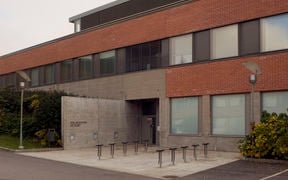
- Published:
- Updated:
